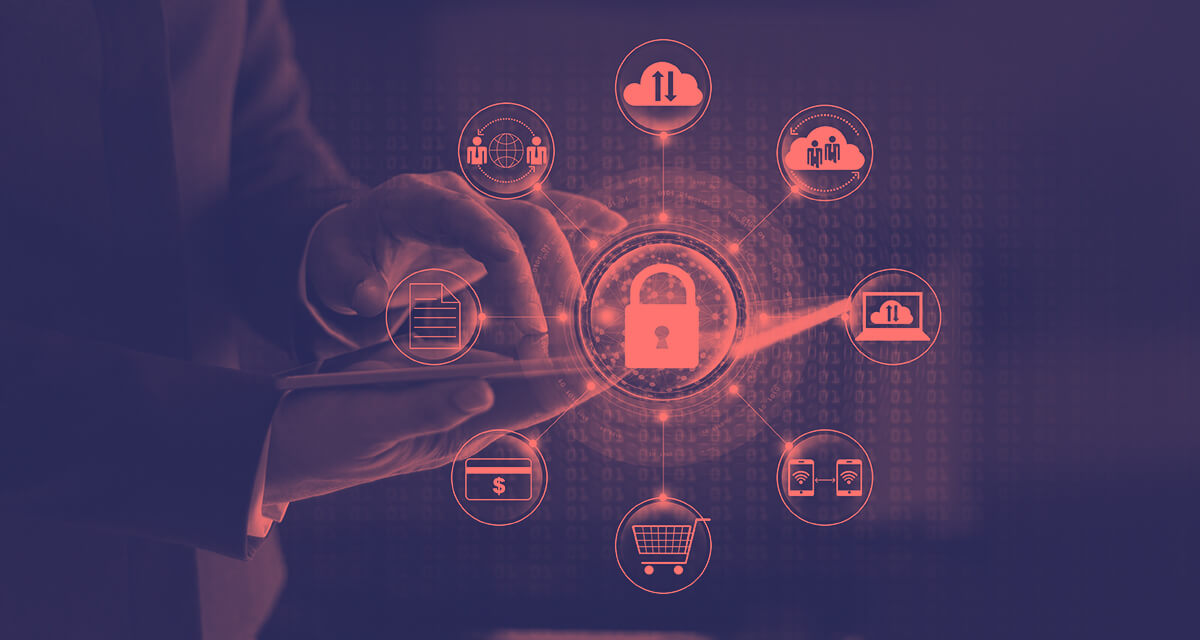

Cloud storage models such as PAAS, IAAS, and SAAS are changing the way companies conduct themselves in the market and internally. From large enterprises to small businesses, everybody is shifting gears to understand and adopt SAAS solutions.
This entails incorporating security policies into their services, products, and business processes. The sound architecture enables organizations and companies to primarily focus on their business while a third party takes care of the security issues.
Here is what you need to know about the SAAS model and how well you can maintain your SAAS application security and implement SAAS security.
SECaaS stands for Security as a Service. This type of security safeguards, monitors, and manages your sensitive data from external threats such as data breaches. With the increased popularity, scalability, and efficiency of cloud-based designs, many organizations and corporations have also become vulnerable to data breaches.
SAAS employs software as a service which is a centrally hosted subscription-based model of software deployment and licensing. Due to this, it is also called on-demand software or subscribeware. It is a part of the term called cloud computing. It is an umbrella term containing other related expressions, such as infrastructure as a service and platform.
Among the plethora of SAAS applications out in the market, some examples of SAAS applications are Microsoft office 365, Adobe creative cloud, Cisco Webex, and Box. The SAAS applications are also called web-based software, as web browsers usually access them. However, it is equally common for software as a service to be delivered through installed software.
Software as a service maintenance measures includes SAAS security posture management that ensures the safety of sensitive data such as personally identifiable information, healthcare, and financial information. The SAAS vendor is responsible for the operating system, securing the platform, SAAS applications, network, and physical infrastructure, while the user is responsible for data and identity management.
To help strengthen the SAAS security measures, many regulatory boundaries worldwide have issued guidelines such as the GDPR. The SAAS vendor must follow these security guidelines to offer safe SAAS security services.
In recent years, a lot of attention has been garnered by SAAS security globally, and its adoption is expected to grow exponentially. This encouraging increase in demand is due to the following uses and benefits of SAAS security.
You only pay for what you use because the companies only purchase on a need basis, so they have to pay no extras. SAAS environment gives the option of yearly on monthly subscription fees that are quite cheap, making it a very reasonable choice for startup businesses
SAAS security gives easy and quick adoption because there is no waiting period. Interested organizations can get access to it instantly. However, on-site applications require more time to deploy.
The guidelines are easy to use for the organization’s security team. You don’t have to worry about application programming interface integration because software as a service integrates with different software with standard application programming interfaces.
The users have no worries about the maintenance and updates of SAAS. This is because all these issues are handled by your SAAS provider so that the company or organization can solely focus on other important problems.
It is a scalable resource that can be up-scaled or downscaled on demand by organizations when and as needed.
You can use SAAS 24/7 from a web browser in a remote manner through the SAAS platforms. This way, you don’t have to pay for the software license, in-house hardware, or any other cloud infrastructure. Moreover, there is no requirement to hire on-site staff to maintain or support the SAAS systems.
SAAS provided security is top quality as they invest in security measures heavily. They do it by distributing servers across many locations with automatic backups to ensure high quality cloud security.
SAAS providers offer and host SAAS services, maintenance and security to their users. This cloud security design protects the sensitive data and software that the service carries. It involves any business’s best practices for gathering data in the cloud to keep the information secure. The provider is responsible for securing the platform, operating system infrastructure, and network.
Since the software as a service environment has a lot of confidential data, it is a common target of cyber criminals. In the case of a security breach, the integrity and safety are compromised, which can also lead to huge financial loss.
So, to protect sensitive data and prevent disasters of the highest degree, SAAS security is required. However, if the SAAS service provider does not deliver up-to-the-mark services, the businesses may experience security threats and service disruptions.
The users or business owners must ensure that all the best security practices are carried out in their organization by employing various SAAS security solutions. If they do not comply with the best practices or the SAAS security solutions, the businesses will fail, leading to many legal implications. In a nutshell, if an organization is utilizing a SAAS model, it must give importance to data security and best practices.
Software as a service brings a range of challenges and risks to the table, such as:
Lack of communication is one of the root causes of security issues in an organization. When it comes to any on-site application, communication and limited interaction between teams can often lead to security issues.
As we already know, software as a service resides in the clouds and caters to various teams of an organization or across the globe. The SAAS application is used by many people with different roles at different levels and varying knowledge of the security system and the applications. So this makes the applications problematic and trickier even for the security professionals to understand.
Teams in an organization have their functions and goals. Unfortunately, the emphasis is often more on business requirements and functionality than security settings. As a result of this imbalance between security and business needs, software as a service can become challenging.
So this is the responsibility of businesses to educate the security teams to balance the security requirements and business needs on an ongoing basis.
Businesses using sales have to only rely on third-party sellers to get secure services. Even though providers offer everything to ensure high quality operation and security, services will often be disrupted. Businesses do not have full control of the security and need to rely on the SAAS providers for continuous support.
It is a good option to migrate your processes and systems to software as a service. But before doing that, it would be best to consider your organization’s requirements and the security requirements of software as a service. Here are some of the SAAS security practices you need to know.
When offering software as a service application, users require a process to log in and access the software. Specific security procedures like only special people with permissions can access the applications on the cloud.
A virtual private network or VPN can protect users’ privacy and secure the communication channel. Moreover, extra security features such as multi-factor authentication can also be used.
Users interact with SAAS apps via millions of channels. These channels must be secure with various security tools, such as data encryption, to protect data from prying eyes. Transport layer security is also a commonly adopted protocol of security to protect and encrypt data in transit.
Moreover, the data in your databases and servers should be encrypted to protect it from cyberattacks and account takeovers. Your SAAS provider should provide server and client encryption with robust security management. It must fully complete audit trails, especially in case hardware is used on the premises.
As a customer, controlling the data encryption keys would be a good practice. You must encrypt all the customer data at rest and in transit to avoid data breaches. Don’t forget that ransomware is quite common now, and security measures such as backup life cycles may not be enough.
You can also utilize the access policy and enforce Data Loss Prevention. All these options can effectively safeguard customer data in the cloud applications.
It is one of the best security practices. Cloud access security brokers or CASBs is a software that functions as a link between SAAS providers and users. It provides the users much-needed visibility and extends the reach of organization security guidelines from on-site infrastructure to the cloud. It is a sort of enforcement center for policies as it combines various security policies in the cloud so businesses can safely use it.
These SAAS tools can help in removing any misconfiguration of security. It can also detect unauthorized usage of the services and user access management.
Frequent updates are very important, just like any other secure environment. Software as a service users should regularly update their standardized virtual machine software and images. All SAAS usage should be tried and monitored. In this way, all the information can be quite helpful in detecting unexpected behavior or abnormalities.
SAAS users can examine the data gathered through tools like CASBs. You can use a combination of manual tools, automation within the SAAS environment, and risk management. This way, you can remain up to date with anything suspicious, unexpected behavior, or ever-changing SAAS usage.
All these measures are critical to ensure that the software as a service users can safely use it.
It is also essential to have a control security group configured to access specific instances. It may include Network Access Control Lists and jump servers. Controlling the thing at the network level gives a layer of security for private clouds.
Network control acts like a firewall to track and control traffic in the cloud and vice versa. This control at the network level also helps filter suspicious and dangerous traffic. The network control is based on preset rules about the type of traffic permitted on the network.
On top of this, prevention systems such as IPS or IDS can be implemented that watch out for dangerous traffic or cyber-attacks, even in the presence of a firewall.
It means that you should put in place standard operating procedures (SOPs) for any incident. SOPs should meticulously cover the investigation procedures for the smallest data security breaches.
Many users use the SAAS security because of its ability to do horizontal and vertical scaling. To ensure the users get what they are looking for, the software as a service provider must have enough redundancy to ensure continuity.
If you have a powerful SAAS security checklist can help you determine whether you can trust your cloud providers or not. In this way, a security checkpoint is inserted into the buying process of SAAS. It helps to understand your company’s security needs and assess whether the supplier can fulfill them properly.
With time cloud computing will evolve and gain a bigger momentum. Due to the ever-changing nature of cloud computing, you need a more powerful security system to prevent security risks, SAAS security concerns, and colossal financial losses.
In this regard, the software as a service model promises high scalability and efficient performance at cheap rates. This means that businesses are and will prefer the SAAS environments.
With best practices and technology deployed, software as a service can become a more secure option than any on-site application. However, there are many risks and challenges associated with the SAAS security model, but there are many ways to overcome them and help businesses grow efficiently.
